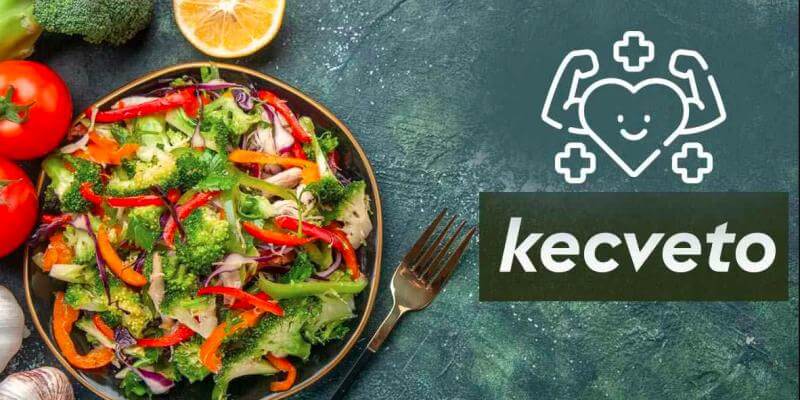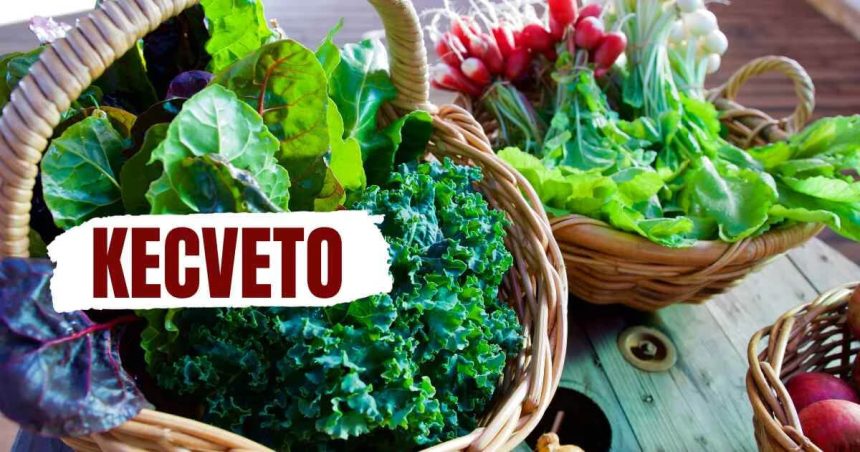In a world where fad diets come and go, promising quick but often short-lived results, Kecveto emerges as a beacon of hope for individuals seeking a sustainable solution to weight loss. Rooted in science and centered around the metabolic state of ketosis, Kecveto offers a reliable method for shedding excess pounds while promoting overall health and vitality. In this comprehensive guide, we delve into what Kecveto is, how it works, its essential principles, the benefits it offers, and tips for successful implementation.
What Is Kecveto?
Kecveto is a dietary approach that focuses on achieving and maintaining a state of ketosis—a metabolic state where the body primarily burns fat for fuel instead of carbohydrates. Ketosis is induced by significantly reducing carbohydrate intake and increasing the consumption of healthy fats and moderate amounts of protein. This shift in macronutrient balance prompts the body to utilize stored fat as its primary energy source, leading to weight loss and numerous other health benefits.
Unlike many traditional diets that focus on calorie restriction or specific food groups, Kecveto emphasizes the manipulation of macronutrients—primarily reducing carbohydrate intake while increasing fat consumption. By doing so, the body enters into a state of ketosis, where it produces molecules called ketones from fat stores to fuel various bodily functions, including energy production for cells and tissues, including the brain.
The Kecveto diet typically involves consuming foods that are low in carbohydrates, moderate in protein, and high in healthy fats. This may include foods such as meat, fish, eggs, non-starchy vegetables, nuts, seeds, avocados, olive oil, coconut oil, and full-fat dairy products. Foods to avoid typically include sugar, grains, starchy vegetables, processed foods, and high-carb fruits.
The primary goal of Kecveto is to induce and maintain ketosis, which is typically achieved by limiting carbohydrate intake to around 20-50 grams per day, depending on individual factors such as activity level, metabolic rate, and health goals. By depriving the body of carbohydrates, it depletes its glycogen stores and switches to using fats as its primary fuel source, resulting in weight loss and numerous other health benefits.
Overall, Kecveto offers a scientifically supported approach to weight loss and metabolic health, emphasizing the importance of macronutrient balance and metabolic adaptation for long-term success. While it may not be suitable for everyone, particularly those with certain medical conditions or dietary restrictions, many individuals have found success with the Kecveto diet in achieving their weight loss and health goals.
Understanding Kecveto:
At its core, Kecveto is about transforming the body’s energy metabolism. Traditionally, the body relies on carbohydrates from food for energy production. However, by restricting carbohydrate intake and increasing fat consumption, Kecveto prompts the liver to produce molecules called ketones, which serve as an alternative fuel source for the body and brain.

How Kecveto Works:
The primary goal of Kecveto is to achieve nutritional ketosis, wherein blood ketone levels are elevated. This is typically accomplished by limiting carbohydrate intake to around 20-50 grams per day, depending on individual factors such as activity level, metabolic rate, and health goals. By doing so, the body depletes its glycogen stores and transitions into a state of ketosis within a few days to a week.
Kecveto Diet Essentials:
- Low Carbohydrate Intake: Restricting carbohydrates is crucial for inducing and maintaining ketosis. Focus on consuming non-starchy vegetables, nuts, seeds, and low-carb fruits while minimizing or eliminating refined sugars, grains, and starchy foods.
- Moderate Protein Consumption: While protein is essential for muscle maintenance and repair, excessive intake can interfere with ketosis by stimulating the production of insulin. Aim for moderate protein intake from sources such as poultry, fish, eggs, and tofu.
- Healthy Fats: Emphasize healthy fats such as avocados, olive oil, coconut oil, nuts, and seeds. These fats not only provide sustained energy but also support ketone production and promote satiety.
- Hydration and Electrolytes: Adequate hydration and electrolyte balance are vital, especially during the initial stages of ketosis when the body excretes more water and electrolytes. Ensure adequate intake of water, sodium, potassium, and magnesium through food and supplementation if necessary.
The Weight Loss Benefits of Kecveto:
- Increased Fat Burning: By prioritizing fat as the primary fuel source, Kecveto enhances the body’s ability to burn stored fat for energy, leading to accelerated weight loss.
- Improved Metabolic Health: Kecveto has been shown to improve insulin sensitivity, blood sugar control, and lipid profiles, which are crucial factors for metabolic health and reducing the risk of chronic diseases such as type 2 diabetes and heart disease.
- Enhanced Satiety: High-fat meals and ketone production promote feelings of fullness and satiety, reducing cravings and the likelihood of overeating.
- Preservation of Lean Muscle Mass: Unlike some traditional calorie-restricted diets, Kecveto prioritizes fat loss while preserving lean muscle mass, which is essential for metabolic rate and overall strength and functionality.
How Kecveto Works and Its Main Benefits:
Kecveto operates on the principle of metabolic adaptation, where the body becomes increasingly efficient at utilizing fat for energy over time. As individuals adhere to the Kecveto diet and enter into ketosis, they may experience a range of benefits beyond weight loss, including:
- Steady Energy Levels: Unlike the energy fluctuations associated with carbohydrate-rich diets, Kecveto provides a consistent and steady source of energy, resulting in improved focus, mental clarity, and productivity.
- Appetite Regulation: Ketones have been shown to influence appetite-regulating hormones, such as ghrelin and leptin, leading to better appetite control and reduced feelings of hunger.
- Enhanced Athletic Performance: While adaptation to ketosis may initially impact high-intensity exercise performance, many individuals report improvements in endurance activities once fully adapted to the Kecveto diet.
- Neurological Benefits: Ketones are not only a source of energy for the body but also for the brain. Kecveto has shown promise in improving cognitive function and may have therapeutic applications in conditions such as epilepsy, Alzheimer’s disease, and Parkinson’s disease.
Tips for Implementing Kecveto Successfully:
- Plan and Prepare: Take time to plan your meals and snacks to ensure they align with Kecveto principles. Stock your kitchen with keto-friendly foods and ingredients to avoid temptation.
- Monitor Your Macros: Track your carbohydrate, protein, and fat intake to ensure you’re staying within the appropriate ranges for ketosis. Utilize apps or food journals to help keep track of your macros.
- Stay Hydrated: Drink plenty of water throughout the day to stay hydrated and support ketone production. Consider adding electrolytes to your water to prevent imbalances.
- Be Patient and Persistent: Adapting to Kecveto may take time, and initial side effects such as the “keto flu” are common. Stay committed to the process, and remember that the benefits will outweigh any temporary discomfort.
- Seek Support and Resources: Join online communities, forums, or seek guidance from healthcare professionals or certified keto coaches for support, motivation, and personalized advice.
Conclusion:
In a landscape inundated with quick-fix diets and weight loss gimmicks, Kecveto stands out as a scientifically supported approach to achieving sustainable weight loss and overall health improvement. By harnessing the metabolic power of ketosis, Kecveto empowers individuals to transform their bodies and reclaim control over their health. With its focus on nutrient-dense foods, metabolic flexibility, and long-term sustainability, Kecveto offers a roadmap to lasting wellness and vitality.
Incorporating Kecveto into your lifestyle requires dedication, patience, and a willingness to embrace change. But for those seeking a reliable and effective method for shedding excess weight and optimizing health, the journey with Kecveto is not just about losing pounds—it’s about gaining a renewed sense of vitality, confidence, and well-being.
FAQs
- What is Kecveto, and how does it differ from other diets?
- Kecveto is a dietary approach focused on achieving and maintaining a state of ketosis, where the body primarily burns fat for fuel instead of carbohydrates. Unlike many other diets that prioritize calorie restriction or specific food groups, Kecveto emphasizes the manipulation of macronutrients to induce metabolic changes for weight loss and overall health improvement.
- Is Kecveto safe for everyone to try?
- While Kecveto can be safe for most individuals, it’s essential to consult with a healthcare professional before starting any new diet, especially if you have pre-existing medical conditions or are taking medications. Pregnant or breastfeeding women, individuals with diabetes or kidney issues, and those with a history of eating disorders should approach Kecveto with caution and under medical supervision.
- What foods are allowed on the Kecveto diet?
- Kecveto focuses on consuming foods that are low in carbohydrates but high in healthy fats and moderate in protein. Examples of foods allowed on the Kecveto diet include meat, fish, eggs, non-starchy vegetables, nuts, seeds, avocados, olive oil, coconut oil, and full-fat dairy products. Foods to avoid typically include sugar, grains, starchy vegetables, processed foods, and high-carb fruits.
- How long does it take to enter ketosis on the Kecveto diet?
- The time it takes to enter ketosis can vary from person to person and depends on factors such as individual metabolism, carbohydrate intake, and activity level. In general, most people can expect to enter ketosis within a few days to a week of following a strict Kecveto diet. Monitoring ketone levels through blood, urine, or breath testing can help determine when ketosis is achieved.
- What are some common side effects of the Kecveto diet, and how can they be managed?
- Common side effects experienced during the initial transition phase into ketosis, often referred to as the “keto flu,” may include fatigue, headaches, dizziness, nausea, and irritability. These symptoms are usually temporary and can be managed by staying hydrated, replenishing electrolytes, getting adequate rest, and gradually increasing fat intake. If side effects persist or worsen, it’s advisable to consult with a healthcare professional.
- Can I exercise while following the Kecveto diet?
- Yes, exercise can be incorporated into a Kecveto lifestyle and may even enhance the benefits of ketosis, such as fat burning and improved metabolic health. However, it’s essential to listen to your body, especially during the initial stages of adaptation, as energy levels may fluctuate. Adjusting exercise intensity and duration as needed, staying hydrated, and prioritizing recovery are key considerations for physical activity on the Kecveto diet.
- Is it possible to follow the Kecveto diet while dining out or traveling?
- While dining out or traveling on the Kecveto diet may present some challenges, it’s entirely feasible with careful planning and flexibility. Many restaurants offer keto-friendly options such as salads, grilled meats, and vegetable-based dishes. When traveling, packing portable keto snacks, researching dining options in advance, and communicating dietary preferences to hosts or servers can help maintain adherence to the Kecveto diet while on the go.
- How can I ensure long-term success with the Kecveto diet?
- Long-term success with the Kecveto diet requires consistency, patience, and a sustainable approach to lifestyle changes. Focus on incorporating nutrient-dense foods, listening to your body’s hunger and satiety cues, staying mindful of portion sizes, and finding enjoyable ways to stay active. Building a support network of like-minded individuals, seeking guidance from healthcare professionals or certified keto coaches, and staying informed about ongoing research and developments in the field can also contribute to long-term adherence and success with the Kecveto diet.



Leave a Reply